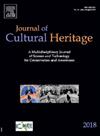Does the preservation policy of historical and cultural heritage promote economic growth? Evidence from China
IF 3.3
2区 综合性期刊
0 ARCHAEOLOGY
引用次数: 0
Abstract
Balancing the preservation of historical and cultural heritage with economic development is a crucial issue in urban sustainability. Although the value of historic and cultural heritage has attracted considerable attention, most previous studies have been based on city case analyses, with few utilizing urban-level data to investigate the causal relationship. Using China’s historical and cultural preservation policy as a quasi-natural experiment, this paper employs the Difference-in-Differences (DID) approach and combines 2000–2019 Chinese county-level data to explore the economic outcome of the Historical and Cultural City (HCC) award. We find that the creation of HCC significantly promotes the economic growth of counties, and this conclusion still holds after parallel trend test and a series of robustness checks. In addition, we check the mechanism from three perspectives: cultural consumption and industry development, employment structure change, and infrastructure, and find that being selected as HCC significantly increases the number of registered enterprises in culture-related services, increases the number of tourists and tourism revenues in the city, facilitates the transfer of employment from the primary to the tertiary industry, and improves the density of the road network. Finally, our heterogeneity analysis indicates that there are geographic and endowment differences in the growth effects of HCC policy, which have a more positive contribution to the economic growth of western regions, provincial border counties, resource-based cities, and poor counties.
历史文化遗产保护政策是否促进了经济增长?来自中国的证据
平衡历史文化遗产的保护与经济发展是城市可持续发展的一个关键问题。虽然历史文化遗产的价值已经引起了人们的广泛关注,但以往的研究大多基于城市案例分析,很少利用城市层面的数据来考察其因果关系。本文以中国历史文化保护政策为准自然实验,采用差异中的差异(DID)方法,结合2000-2019年中国县级数据,探讨历史文化名城(HCC)奖励的经济效果。我们发现,HCC的产生显著促进了县域经济增长,经过平行趋势检验和一系列稳健性检验,这一结论仍然成立。此外,我们从文化消费与产业发展、就业结构变化、基础设施建设三个角度对机制进行了检验,发现被选为HCC显著增加了城市文化相关服务业的注册企业数量,增加了城市的游客数量和旅游收入,促进了就业从第一产业向第三产业的转移,提高了路网密度。最后,我们的异质性分析表明,HCC政策的增长效应存在地域和禀赋差异,对西部地区、省际边县、资源型城市和贫困县的经济增长有更积极的贡献。
本文章由计算机程序翻译,如有差异,请以英文原文为准。
求助全文
约1分钟内获得全文
求助全文
来源期刊

Journal of Cultural Heritage
综合性期刊-材料科学:综合
CiteScore
6.80
自引率
9.70%
发文量
166
审稿时长
52 days
期刊介绍:
The Journal of Cultural Heritage publishes original papers which comprise previously unpublished data and present innovative methods concerning all aspects of science and technology of cultural heritage as well as interpretation and theoretical issues related to preservation.
 求助内容:
求助内容: 应助结果提醒方式:
应助结果提醒方式:


